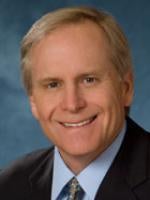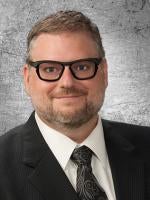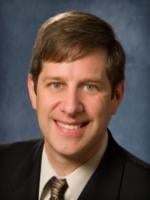In a spate of recent decisions, the Federal Circuit seems to be loosening the reins on 101 software subject matter disqualifications. In Amdocs, the Federal Circuit considered whether the district court was in error when it found, on the pleadings, that Amdocs claims were invalid as directed towards and abstract idea.[1] The Federal Circuit restated the Alice/Mayo two-part framework for determining patent eligibility under § 101.[2] The court noted that there can be overlap in the determination and there is no “single, succinct, usable definition or test” that informs whether a detailed analysis should be completed under step-one or step-two of the Alice/Mayo framework.[3] The court began its analysis by accepting, for the sake of argument, that the district court’s identification of the abstract idea at issue was correct.[4]
Representative claim:
A computer program product embodied on a computer readable storage medium for processing network accounting information comprising:
computer code for receiving from a first source a first network accounting record;
computer code for correlating the first network accounting record with accounting information available from a second source; and
computer code for using the accounting information with which the first network accounting record is correlated to enhance the first network accounting record.
(’065 patent at 16:4–14.)
In analyzing the claims, the court considered claims found to be ineligible in Digitech, Content Extraction, and In re TLI as well as claims found to be eligible in DDR Holdings and BASCOM.[5] The court found the claims to be more like the claims at issue in DDR Holdings and BASCOM because, even though the claims arguably involved generic computer components, the claims, as a whole, represented an unconventional technical solution to a technical problem.[6] The court leaned on the claims’ enhancement element and recitation of a distributed architecture, as described in the claims and written description, to determine that the claims represented an unconventional technical solution narrowly tailored to address a technological problem specific to computer networks.[7] Thus, even if the claims were directed to an abstract idea, the court found that the claims amount to significantly more than an abstract idea.
The Federal Circuit appears to be increasingly using the written description to interpret the claims as part of the analysis under § 101. In BASCOM and Amdocs, the court used the specification as evidence of the unconventional nature of the solution presented in the claims. These decisions appear to provide additional support for including a complete description of the technical problem and solution in the specification if § 101 may be a concern. In addition, providing additional structural elements, even if they are generic, may help in an eligibility determination if the arrangement of the elements represents a unique approach that is beneficial over the art.
One major take away from this case is that this panel of the CAFC clearly believes software is patent eligible subject matter. At least some of the representative claims discussed (e.g., claim 1 of the ‘065 patent, page 20) is a computer readable medium claim reciting computer code for performing a series of operations. This is very welcome after comments in recent cases from certain judges suggesting that software should be per se unpatentable.
In fact, the eligibility analysis at least partially relies on the fact that the claims recite “computer code for” doing something specific (see page 22). Of course, this same section includes an arguably dubious claim construction reading relatively significant additional limitations into the facially broad claims. The claim construction aspect, is where the majority relies heavily on the specification to interpret the technical nature of the claims. Without the majority digging into the specification to determine the nature of the invention being claimed, the representative claim appears far too broad to survive any recent district court or PTAB eligibility analysis.
The majority opinion continues by contrasting the interpreted representative claim against ineligible subject matter:
In contrast to the claims in Digitech, the majority finds “claim 1 of the ‘065 patent is tied to a specific structure of various components (network devices, gatherers, ISMs, a central event manager, a central database, a user interface server, and terminals or clients).” Please note, NONE of the structure recited by the majority is literally recited in the representative claim.
In contrast to the claims in Content Extraction, the majority finds “claim 1 of the ‘065 patent depends upon a specific enhancing limitation that necessarily incorporates the invention’s distributed architecture–an architecture providing a technological solution to a technological problem.” Again, the majorities distinction over prior precedent relies entirely on a very favorable construction of the claim language (the representative claim merely recites “computer code for using the accounting information with which the first network accounting record is correlated to enhance the first network accounting record,” with no additional recitations to characterize what “enhance” means).
The majority then favorably compares the representative claim to DDR Holdings and BASCOM:
“[C]laim 1 solves a technological problem (massive data flows requiring huge databases) akin to the problem in DDR Holdings (conventional Internet hyperlink protocol preventing websites from retaining visitors). … Claim “1 involves some arguably conventional components (e.g., gatherers), but the claim also involves limitations that when considered individually and as an ordered combination recite an inventive concept through the system’s distributed architecture.” Remember, the representative claim is a computer-readable medium claim correctly drafted from the perspective of a single machine. Accordingly, it is unclear how the claim involves a distributed architecture.
Similar to BASCOM, “the benefits of the ‘065 patent’s claim 1 are possible because of the distributed, remote enhancement that produced an unconventional result–reduced data flows and the possibility of smaller databases.” This entire line of argument from the majority can only be supported through heavily interpreting the claims in light of the specification.
While the majorities analysis of the ‘065 patent is the best example, the eligibility analysis of all four of the patents at issue seems to rely very heavily on a strong interpretation of the claim in light of the specification. Initially, it was surprising that Judge Reyna dissented in this case, after writing a very favorable eligibility decision in MCRO, which also used some interpretation of the claims in light of the specification in support of eligibility. However, the majority in this decision goes far beyond the MCRO decision in use of the specification and claim construction to support eligibility.
Eric Bachinski and Greg Stark of Schwegman contributed to this article.
[1] Amdocs (Israel) Limited v. Opnet Telecom, Inc., 2015-1180, pp. 6 & 7, (Fed. Cir. November 1, 2016).
[2] Id. at pp. 7 & 8.
[3] Id. at pp. 8 & 9.
[4] Id. at p. 34.
[5] Id. at pp. 12–19.
[6] Id. at pp. 22 & 23.
[7] Id. at p. 24.




 />i
/>i

